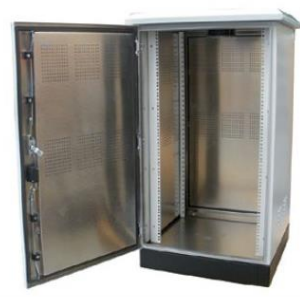What are Lithium batteries?
Lithium batteries are in short primary batteries that have metallic lithium as an anode. The choice of active materials gives them their unique personalities. Lithium-ion is named for its active materials, the words are either written in full or shortened by their chemical symbols. Lithium-ion batteries are lighter with higher density whereas nickel metal hybrid batteries that are heavier and less environmentally friendly which makes lithium a desirable choice for the industrial and automobile industry. The self-discharge is also less than half that of a nickel-based system and have a low memory, so it does not need a deliberate full discharge to keep in shape.
What are Lithium batteries used for?
Lithium batteries were first made in 1912, but they were not available for the public until the 1970’s when the first rechargeable lithium-ion battery was developed. Lithium-ion batteries are the fastest growing battery type with the most promising chemistry and are used in practically any sector in one way or another. The batteries are available in many varieties, and they vary in performance depending on which one you look at.
Today Lithium batteries are used in a wide variety of industries, from hearing aids and mobile phones to powering UPS’s and electric and hybrid cars, and large investments are being made to make the shift to power more sectors through batteries than other power sources.
We have made a simple breakdown of the six different battery types that currently are on the market and their usual usages.
The 6 different Lithium battery types:
Lithium Cobalt Oxide (LiCoO2) — LCO
Mainly used in mobile phones, laptops and digital cameras. It has a relatively short lifespan, low thermal stability and limited capabilities. Newer version include nickel, manganese and/ or aluminium to improve lifespan and cost. It should not be charged and discharged at a higher current than a C-rating as a higher rating causes overheating and stress on the battery which can cause it to fail. The LCO was an early version of the battery and since 2019 it is no longer relevant.
Lithium Manganese Oxide (LiMn2O4) — LMO
Mainly used in power tools, medical devices and electric and hybrid vehicles. Most Li-manganese batteries blend with lithium nickel manganese cobalt oxide to improve the specific energy and prolong the life span of the battery. This combination brings out the best in each system and is chosen for most electric vehicles. Li-manganese have roughly the capacity of one-third lower than Li-cobalt, but pure Li-manganese batteries are no longer common outside special applications. The LMO is less relevant since 2019 because of its limited growth potential.
Lithium Nickel Manganese Cobalt Oxide (LiNiMnCoO2) — NMC
NMC is usually used in e-bikes, medical devices, and industrial industries and is preferred in electrical vehicles. It has a lower cost than cobalt based batteries and with the nickel-based system it has a higher energy density, is lower in cost and have a longer life cycle though have a slightly lower voltage. NMC is a leading system today and have a dominant cathode chemistry and this battery family is growing in its diversity. The market share is consistently increasing and serves as a Hybrid Cell. Commercially this has been around only since 2008 making it one of the newest battery on the market along with LTO batteries.
Lithium Iron Phosphate (LiFePO4) — LFP
Mainly used in special markets in portable and stationary items that need high load currents and endurance. This is one of the safest batteries, even when discharged. If it is used in cold temperatures the performance gets reduced which could affect the cranking ability in extreme cases. Today it is primarily used for energy storage.
Lithium Nickel Cobalt Aluminum Oxide (LiNiCoAlO2) — NCA
NCA has been gaining popularity over the years and is the most well-known battery as the battery used by Tesla in their cars until a new one has been developed. NCA is mainly used in the medical devices, in the industrial sector and is currently mostly used by Panasonic and Tesla uses in their cars. It has a high growth potential and its popularity is increasing. The cost is relatively high and marginal safety are negatives, but its high energy, long lifespan and power density makes up for it.
Lithium Titanate (Li2TiO3) — LTO
Usually used for UPS, electrical powertrains and solar powered streetlights. It has a long-life cycle, fast charge and a wide temperature range and is among the safest Li-ion batteries on the market, but it is expensive to use, and it has a low specific energy.




